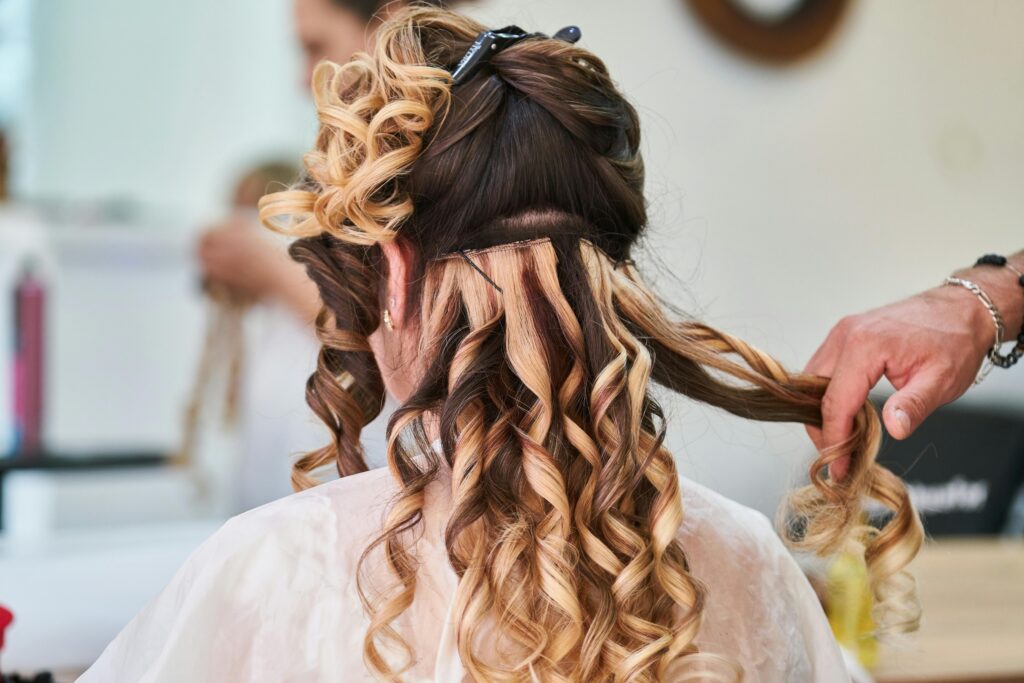Hair extensions are a game-changer in the world of beauty, allowing women to experiment with length, volume, and style effortlessly. However, choosing the right hair extensions for your unique hair type can feel overwhelming with the variety of options available. The key to a flawless, natural look lies in understanding your hair’s texture, density, and condition, as well as the types of extensions best suited for you. This comprehensive guide will help you navigate the choices and empower you to make an informed decision.
Understanding Hair Types and Textures
Hair types are typically categorized by texture, density, and porosity. Texture refers to whether your hair is straight, wavy, curly, or coily, while density describes how thick or thin your hair appears. Porosity, or your hair’s ability to absorb and retain moisture, also plays a role in how well extensions blend and maintain their appearance over time. Recognizing these factors can help you select extensions that complement your natural hair seamlessly.
Straight hair often has a smooth, sleek appearance that may require extensions with similar silkiness to blend effortlessly. Wavy hair, with its natural bends, benefits from extensions that replicate its gentle waves. For curly or coily hair, extensions with a matching curl pattern ensure a cohesive, natural look.
The Science Behind Hair Extensions
Hair extensions come in two primary materials: synthetic fibers and human hair. Synthetic extensions are typically made from plastic-based materials such as acrylic, which are heated and molded to mimic the appearance of human hair. While they are affordable and come in a range of colors and styles, synthetic extensions are less durable and cannot be heat-styled.
Human hair extensions, on the other hand, are made from real human hair and offer a more natural appearance. They can be styled with heat tools, dyed, and treated much like your natural hair. When selecting human hair extensions, look for “Remy” hair, which ensures that the cuticles are intact and aligned in the same direction. This minimizes tangling and enhances longevity, making them a preferred choice for many women.
Types of Hair Extensions
Choosing the right type of hair extension is crucial for achieving the desired look while maintaining the health of your natural hair. Clip-in extensions are a popular choice for their versatility and ease of use. They are ideal for occasional use or special events, as they can be applied and removed without professional assistance. Tape-in extensions, which are lightweight and seamless, work well for women with fine or thin hair, as they distribute weight evenly and minimize strain on the scalp.
For a longer-lasting solution, sew-in or weave extensions are an excellent option, particularly for women with thick or coarse hair. These extensions are sewn into braided sections of natural hair, providing a secure and durable result. Fusion and micro-link extensions are also semi-permanent options that use heat or beads to attach extensions strand by strand. While these methods offer a natural look, they require professional application and maintenance.
Matching Extensions to Hair Type
Fine hair requires extensions that add volume without causing damage or stress to the scalp. Tape-in extensions are a gentle choice, as they lay flat against the head and blend seamlessly. Women with fine hair should avoid heavy extensions, as these can weigh down the hair and cause breakage over time.
For medium to thick hair, clip-in or sew-in extensions provide excellent results. These hair types can handle the added weight of extensions without compromising the integrity of the natural hair. Additionally, human hair extensions are often a better match for medium to thick hair, as their texture and density align closely with natural hair.
Curly and coily hair types benefit from extensions that mimic their natural curl pattern. Look for extensions specifically designed for textured hair to ensure a flawless blend. Sew-in or clip-in extensions are particularly effective for these hair types, as they allow for styling flexibility while maintaining the natural look of curls and coils.
Maintaining Your Extensions
Regardless of the type of extensions you choose, proper maintenance is essential to keep them looking their best. Use sulfate-free shampoos and conditioners to preserve the integrity of both synthetic and human hair extensions. Detangle gently using a wide-tooth comb or a brush designed for extensions, starting from the ends and working your way up. For permanent extensions, schedule regular maintenance appointments with a professional to ensure they remain securely in place and do not cause damage to your natural hair.
The Importance of Professional Guidance
Consulting a professional stylist can make all the difference when selecting and applying hair extensions. A stylist can assess your hair type, recommend the best extensions for your needs, and ensure proper application. This minimizes the risk of damage and ensures a seamless, natural result.
Choosing the right hair extensions for your hair type is a blend of science and art. By understanding your hair’s texture, density, and condition, and selecting extensions that align with these factors, you can achieve a stunning, natural look that enhances your beauty. Whether you opt for clip-ins, tape-ins, or sew-ins, prioritize high-quality materials and proper maintenance to enjoy your extensions to the fullest. With the right approach, hair extensions can be a transformative addition to your beauty routine, offering endless possibilities for self-expression and style.





